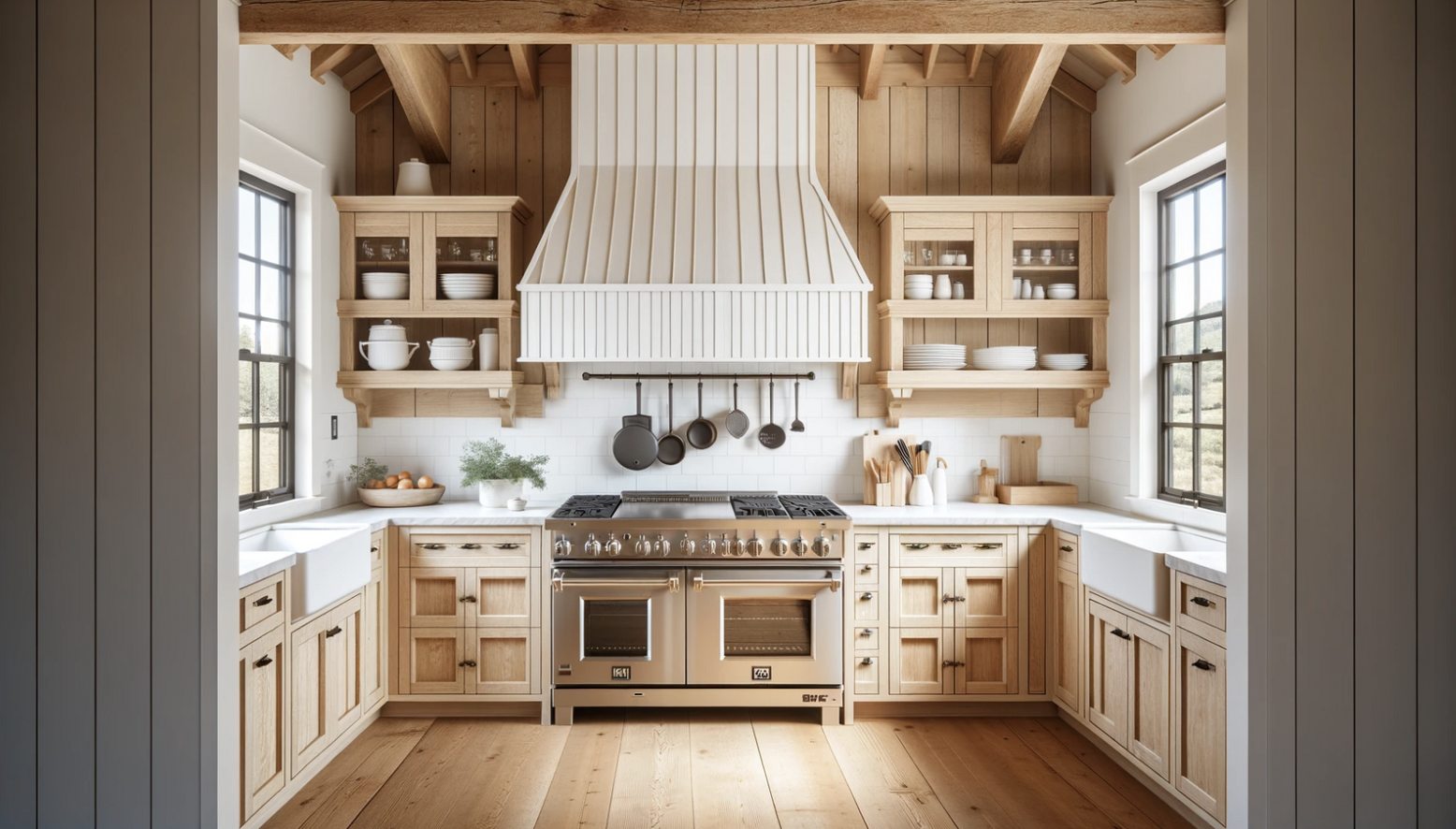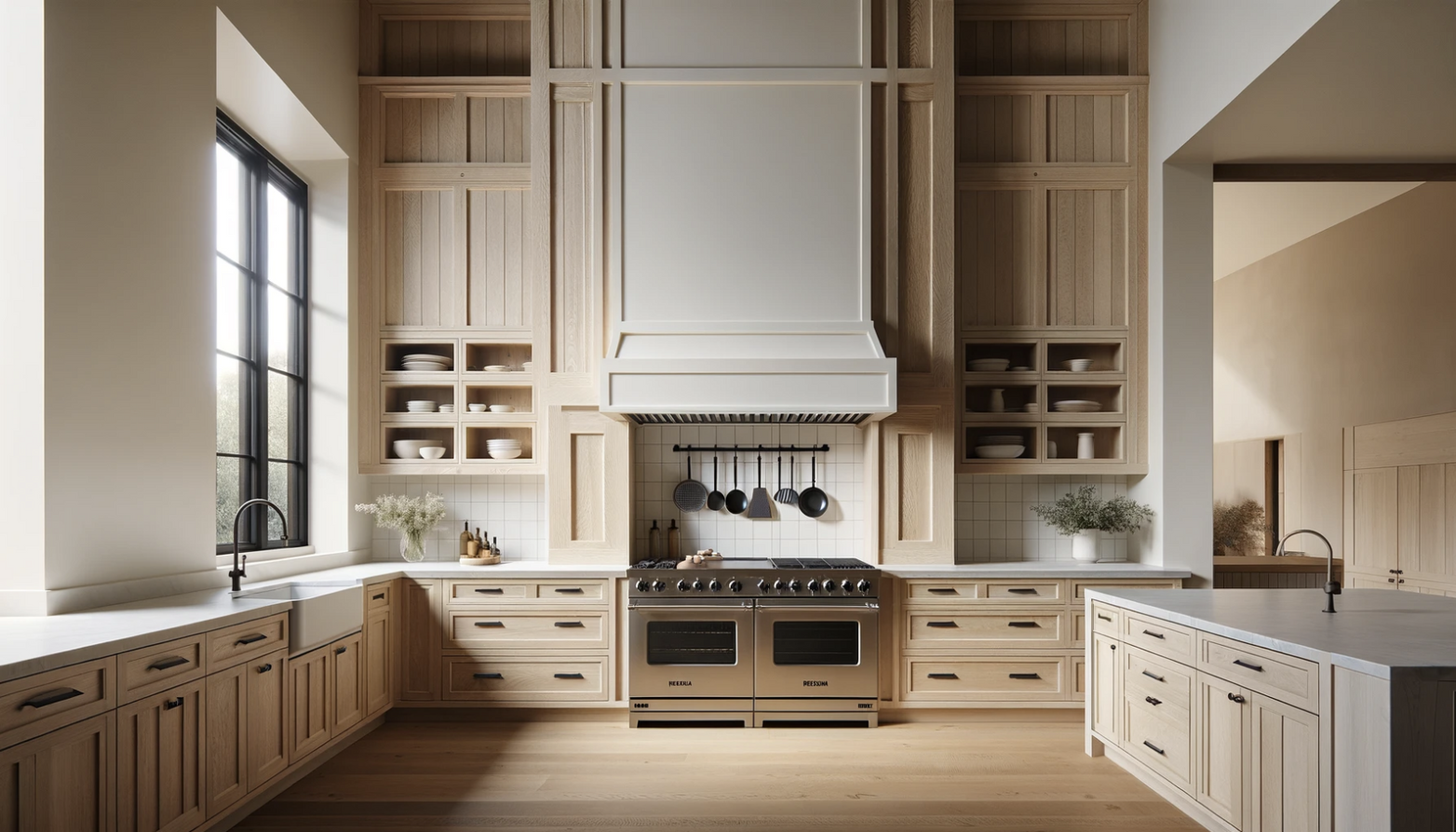The integration of AI into interior design is increasingly becoming a reality, offering tools and technologies that can enhance the design process. However, the idea of AI completely replacing human interior designers is not straightforward. Here are several points to consider:
All of these images were created by AI based on my prompts. I love the texture on this hood!
I love the cabinets in this, although they are not realistic
Enhancement, Not Replacement: AI can significantly enhance the capabilities of interior designers by providing them with tools for better visualization, more efficient space planning, and personalized design recommendations based on vast datasets. These technologies can streamline the design process, making it faster and more efficient, but they don't replace the creative intuition and personal touch that a human designer brings to a project.
Creative and Emotional Intelligence: Interior design is not just about the functional arrangement of space but also about understanding the emotional and aesthetic needs of clients. The ability to interpret a client's vague ideas and turn them into a coherent and visually appealing design requires empathy, intuition, and creativity—qualities that AI currently lacks.
Complex Problem Solving: While AI can suggest design solutions based on predefined parameters and trends, human designers excel at complex problem-solving that involves unique constraints and preferences. As designers, we can negotiate between conflicting client desires, budget limitations, and structural realities in ways that AI might not fully grasp.
Cultural and Contextual Sensitivity: Interior design often involves cultural considerations and sensitivity to the specific context of a project, including historical and environmental aspects. We designers can navigate these nuances and incorporate them into their designs in a way that resonates on a personal level with clients.
The Role of AI in Automation: Certain aspects of design, particularly those involving repetitive tasks or data analysis (such as optimizing space utilization or energy efficiency), are more likely to be automated by AI. This doesn't mean replacing designers but rather freeing them to focus on the more creative and impactful aspects of their work.
Collaboration Between AI and Designers: The future likely holds a collaborative model where AI and human designers work together. AI can provide designers with innovative tools and insights, while designers can imbue projects with the creativity, empathy, and understanding that AI lacks.
Such good inspiration on the cabinets
AI generated kitchen with some interesting floors
Although I don’t love this design, there are some good ideas that can be adapted to fit a real home
While AI will continue to transform the field of interior design by offering powerful tools and efficiencies, the core of interior design—rooted in creativity, emotional intelligence, and human experience—is unlikely to be fully replaced by AI. The relationship between AI and interior design is more about augmentation and collaboration than replacement.






